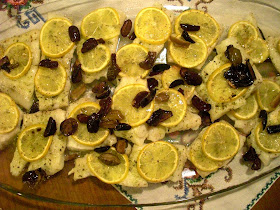A few months ago my husband and I had a rare moment to go into NYC by ourselves, sans kids. My mother-in-law gave us tickets to see Fela, a fabulous Broadway show about Fela Kuti, one of our favorite musicians from Nigeria, and choreographed by Bill T. Jones who I also love! (Very worth the trip, check it out!) After the show we got together with one of our oldest friends Mel and her boyfriend Caesar, both of whom are acupuncturists and great NYC foodies. We ended up in the east village at The Red Head, a farmers' market driven southern cooking restaurant with some New Orleans influence. It was very good, and better than you'd imagine even the best southern influenced cooking could be, and I don't say things like that lightly. We got to talking about foods we love, only to learn that Caesar had been carrying his own salt around with him lately, to sprinkle on all kinds of things! After dinner we treked over to Porchetta, a small pork restaurant in alphabet city, where Caesar quickly purchased a little tin, and handed it to me as a gift. A fabulous gift! It was a great night, and did a lot to quench my thirst for NYC food and friends.
Since returning home, I have been sprinkling tiny bits of this fragrant fennel pollen laced salt on just about everything, fish, bagels, tofu, carrots, you name it. I love Fennel, and the deep but fresh aroma of the fennel pollen, mixed with sage and rosemary in this salt is just wonderful. We have fondly come to call it "Pig Salt", due to the pig on the tin (not very kosher, I know). If you want to experiment with fennel pollen, there are lots of resources online for it and you can shop around, but here is one site where you can purchase some.
For our passover seder last night hosted by my mother, I was given the task of making 2 cakes, the matzo balls and the fish. A recipe ripped from the NY Times was left on my counter a few days ago and then yesterday a large bag of Haddock she'd purchased. Check out the original recipe which included thinly sliced roasted lemons and olives, both of which I love. I hadn't really looked at the recipe much until I was ready to cook it, and hadn't noticed that it had fresh rosemary as well. Since my garden is still thawing, I didn't have any on hand, I thought my fennel pollen salt with rosemary would make a great substitution for the fresh rosemary and also the chili powder in the recipe.
I followed the recipe and started by roasting the fish with the lemons at 450, and then broiling them for a minute to brown them, but they didn't really brown much. I would start by broiling them first, and then set the oven to 450 to finish them if needed. We served this up with roasted asparagus and green beans, as well as smashed fingerling potatoes with leeks.
We had a very nice seder, which this year included the reading of the names of many of our family members who died during the Holocaust in Europe. We had old friends and new ones, family members ranging in age from 1-87, and of course, tons of great food. Below clockwise from the left: matzo ball soup, my mom's roasted chicken staying warm, a fabulous almond cardamom and lemon cake (no dairy, no gluten), and miriam's delicious salad with pea shoots, candied nuts, and some roasted beets my mom added on.
What did you cook or eat this week?
To leave a comment, click "comments" below































